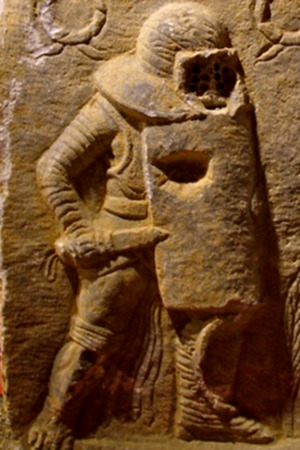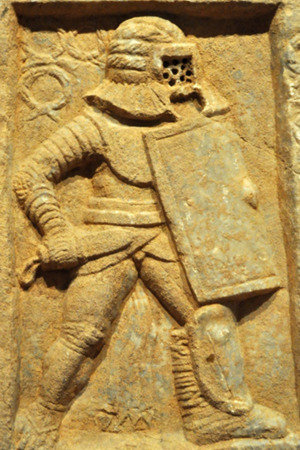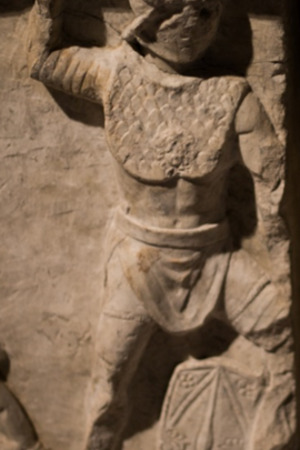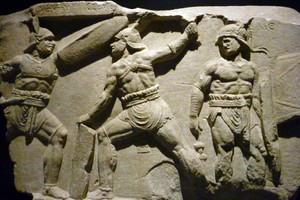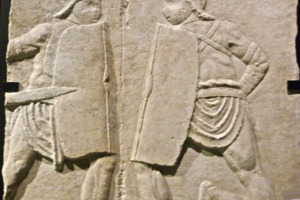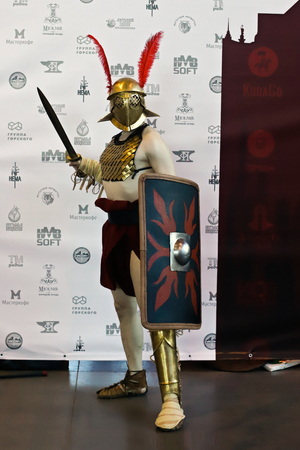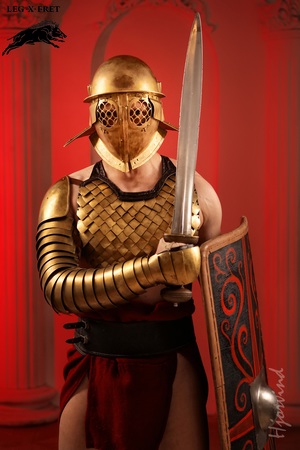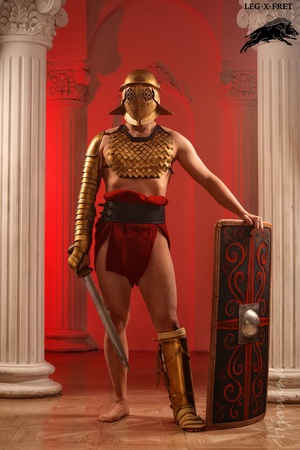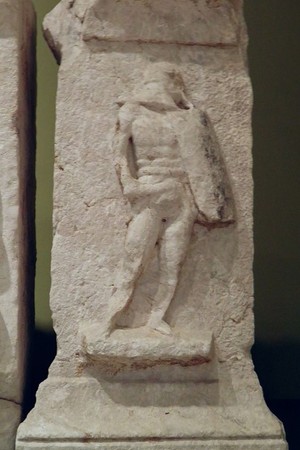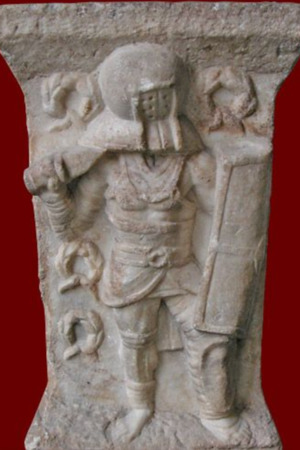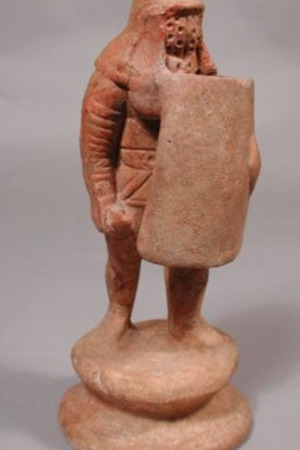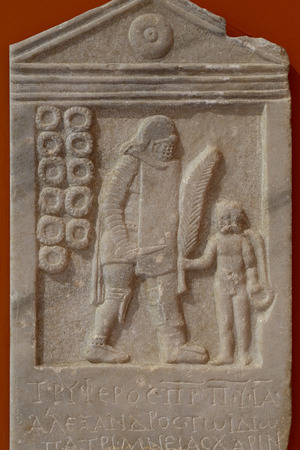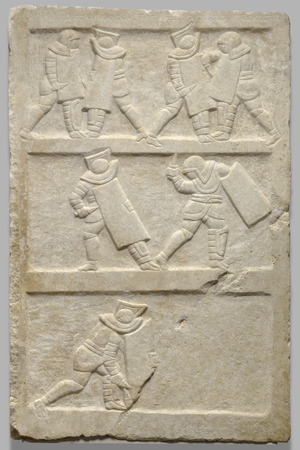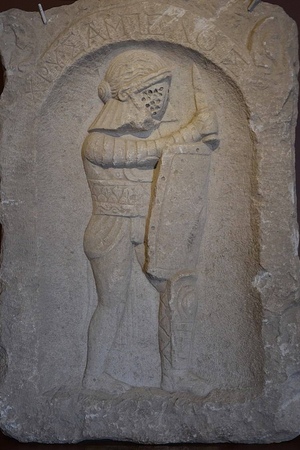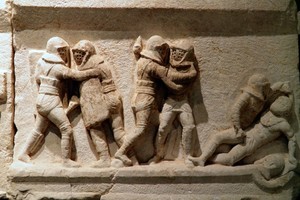Provocator
Provocateur (lat. provocator "throwing a challenge") - a heavily armored gladiator-swordsman in Ancient Rome.
Provocateurs are mentioned in the late Republican period, from the times of the Empire numerous inscriptions have survived, speaking about this type of gladiator. There is evidence of fights with samnites, murmillos, as well as with other provocateurs. They were depicted wearing a loincloth - a subligaculum, a belt, a short greave on the left leg, a manica and a helmet similar to a legionnaire's: with a visor, without fields and a crest. Provocateurs were armed with a gladius and a scutum shield, which could be somewhat shorter than that of the legionnaires. The provocateur's chest was protected by a scale or lamellar cardiophylax. It should be noted that body protection was rare among gladiators. The equipment of the provocateur weighed 10-15 kg.
Judging by the surviving sources, the equipment of provocateurs could vary greatly in appearance, although it had common elements. For example, the way of wearing the subligaculum could vary: there are bas-reliefs with a knot in front, as well as at the back. There are also gladiators with both a short greave up to the knee, and a long one, going above the knee.
Interestingly, according to bas-reliefs, a provocateur could appear in classic Roman infantry helmets with characteristic cheek guards. There are images where the gladiator is depicted without any face protection. Also, the provocateur's shield could be not rectangular, but rounded, in a Republican style.
Equipment
When reconstructing a fight on a hard surface (not on sand), it is recommended to use authentic footwear, for example, caligae.
Related topics
Gladiator, Helmet, Manica, Ocrea, Balteus, Subligaculum, Gladius, Pugio, Scutum, Cardiophylax, Murmillon, Samnit

 Gallery
Gallery






